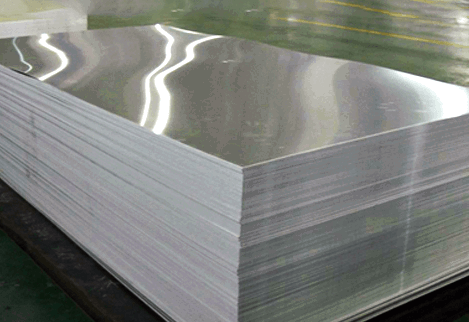Learn about the stainless steel manufacturing process
Stainless steel is an alloy. The chrome content makes it a shiny, non-corrosive metal. This rust and stain free metal is a fundamental part of our daily life due to its use in cutlery and other household items.
Stainless steel is metallurgically defined as 11% chromium alloy steel. The rate of chromium and other elements differs depending on the desired grade of steel. Its use is popular in industrial and household appliances as it does not corrode, stain or rust as easily as regular steel. Although it is called "stainless," it is not fully rustproof. They are also called CRES by Steel Company In Singapore, or corrosion-resistant steel, especially when the alloy is gradeless.

It is convenient in various grades and surface finishes meeting industrial and domestic requirements and the environment in which the metal is exposed. Various grades of stainless steel have various chromium amounts to generate the desired Mild Steel Plates of chromium oxide, which prevents rust from spreading.
The process of manufacturing
Stainless steel is made of steel, chrome, nickel, manganese, and nitrogen. The manufacture of stainless steel comprises a series of steps.
First, the raw materials are melted in an electric oven. They undergo at least 12 hours of intense heat.
The mix is molded into rectangular slabs, plates, or bar-like billets before taking a semi-solid form.
This initial form of steel is processed through the forming operation that includes hot rolling of steel bars, cables, sheets, and plates.
Then the metal is annealed using the Perforated Panel. This is a heat treatment where the metal is first heated and then cooled under extremely controlled conditions. Consequently, the metal is treated with internal tension and is properly smoothed and strengthened. The aging temperature affects the properties of the metal massively. The low temperatures cause high strength and low resistance to breakage. The high temperatures result in a stronger material with low strength. Rapid cooling can provide strong steel without significant loss of strength.
Annealing or heat treatment of Perforated Sheet can develop a precipitate, known as fouling. These encrustations can be eliminated through different methods, such as pickling, electrolyzing, etc.
The descaling of the material in the Metal Works Singapore manufacturing process is carried out at different times, depending on the type of steel produced. Although steel ropes and rods have been traditionally treated with hot rolling, forging, and extrusion, the sheets and strips go through descaling.
The cutting operations in the manufacturing process are essential to obtain the desired shape and size of the final product. Mechanical cutting involves the use of high-speed steel guillotines and blades for drilling and chopping. It can also be cut with a torch, a process that involves the use of a flame generated by oxygen, propane, and iron dust. The plasma flame cutting method uses a column of ionized gas to melt and cut the metal.
Surface finish, the final step in Stainless Steel Fabrication Singapore, is critical to obtaining the smooth, reflective surface for which metal is popular. This last step provides the product with the desired corrosion resistance and leaves the metal ready for other specific industrial manufacturing steps as required.



